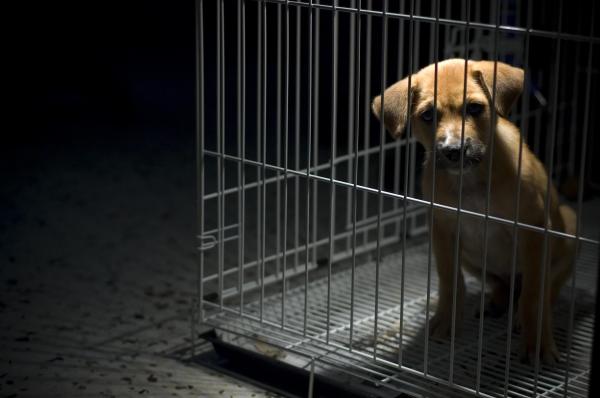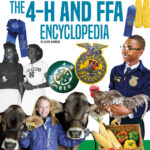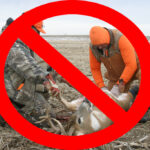Animal cruelty remains a deeply troubling societal issue, manifesting in various forms and often becoming a chilling harbinger of broader behavioral patterns. For many, this alarming phenomenon has prompted questions regarding its relationship with psychological disorders, particularly psychopathy. The correlation between animal abuse and psychopathic traits provides a lens through which we can better understand not only the motivations behind such cruelty but also its implications for future behavioral patterns. The interconnection between these two areas invites a closer examination of the traits that may indicate a psychopathic disposition and how these traits reveal an unsettling fascination for some individuals.
The fascination with animal cruelty often stems from its juxtaposition against societal norms that praise empathy and compassion. It is a distressing paradox that some individuals find gratification in inflicting pain upon innocent creatures. This propensity raises an essential question: could the behaviors of these perpetrators be indicative of underlying psychopathic traits? The connection is not merely coincidental; research has identified several key characteristics that can serve as red flags for psychopathy, particularly as they relate to the cruelty towards animals.
One of the hallmark traits of psychopathy is a profound lack of empathy. This absence is not only limited to interpersonal relationships but extends to the treatment of animals as well. Individuals exhibiting this trait often do not comprehend or care about the suffering they inflict. For instance, a person who derives pleasure from tormenting animals may view them as mere objects, devoid of feelings. This lack of emotional resonance can be chilling, suggesting an emotional detachment that is central to psychopathic identity.
In addition to the absence of empathy, individuals prone to psychopathy often display manipulative behaviors. They may use charm or deceit as tools to achieve their desires, often skewing perceptions to deflect scrutiny. This manipulative capacity can manifest in various dimensions, such as leading others to believe they are caring or even altruistic, despite their underlying cruelty. Such behavior positions them as adept at hiding their true selves, allowing momentum for their harmful actions to escalate. As they engage in animal abuse, they may simultaneously groom social relationships, rendering them more dangerous.
Another salient characteristic is an inflated sense of self-worth. People exhibiting psychopathic traits often have grandiose beliefs about their own abilities and superiority over others, which includes a penchant for thrill-seeking behaviors. This need for stimulation can lead to a compelling cycle where acts of animal cruelty are used as a means of achieving excitement or adrenaline. For them, the suffering of a defenseless being transforms into an exhilarating experience. The more desensitized they become, the more extreme the behaviors may become, perpetuating a vicious cycle of abuse.
Additionally, a common observation among those who perpetrate animal cruelty is a history of violent behavior. Psychopaths often display a continuum of aggression, which may have beginnings in less severe acts of cruelty that escalate over time. The trajectory often reveals that animal abuse is a precursor to greater violence, including interpersonal crimes. These behaviors can reflect a broader issue of impulse control and aggression management, making it crucial to recognize these warning signs early on.
It is also pertinent to explore the social aspects surrounding animal cruelty. Research indicates that many individuals who engage in such behaviors might do so as a consequence of social isolation or a desire to exert power over something vulnerable. This reflects another characteristic associated with psychopathy: a tendency toward social detachment. The thrill derived from controlling or harming animals may serve as a form of escapism, exploiting their vulnerability in a world where they feel powerless. The repetitive nature of this cruelty could suggest a means of coping with their own issues rather than a mere reflection of sadistic tendencies.
This alarming phenomenon also promotes further inquiry into the long-term implications of animal cruelty as a potential precursor to more severe forms of violence. Historical data suggests that many serial killers have demonstrated a pattern of sadistic behaviors towards animals during childhood and adolescence. By recognizing these patterns, communities can create awareness and preventive measures aimed at identifying at-risk individuals and steering them away from violent paths. Early intervention could be critical in breaking the cycle of cruelty and in fostering a culture of empathy, compassion, and kindness towards all living beings.
Understanding the complexity of animal cruelty is equally about addressing societal norms that tolerate or normalize such behavior. Cultural narratives that glorify violence, particularly in media and entertainment, can desensitize individuals and diminish the perceived relevance of empathy. A collective societal responsibility exists to challenge these narratives and promote discussions around compassion and the importance of protecting vulnerable beings. This requires a community effort to create an environment wherein empathy is taught and valued, counteracting the allure of cruelty.
In closure, while not all individuals who engage in animal cruelty are psychopaths, there exists a significant overlap that warrants attention. The traits indicative of psychopathy—lack of empathy, manipulativeness, grandiosity, and aggression—provide a framework for understanding this troubling behavior. Observing these traits can pave the way for early intervention and prevention strategies, serving to protect both animals and society at large from the ramifications of violent behaviors. By fostering empathy and compassion, we set the stage for cultural change that places value on all forms of life, steering society away from the shadows of cruelty and towards a brighter, more humane future.









